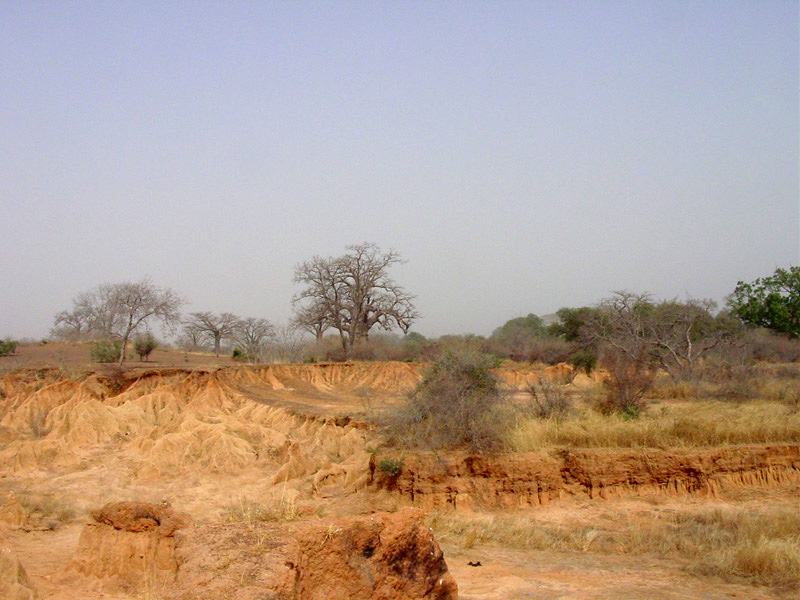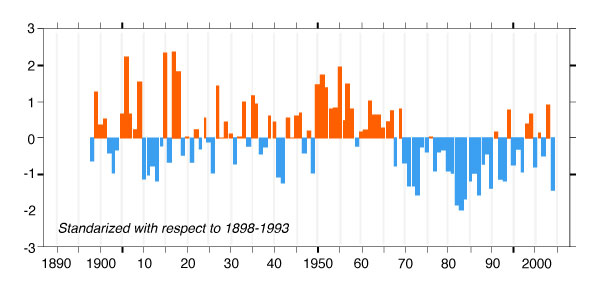
|
| The Sahel, comprising portions of ten (10) African countries, from left to right: [northern] Senegal, [southern] Mauritania, [central] Mali, [northern] Burkina Faso, [southern] Algeria, [southwestern] Niger, [northern] Nigeria, [central] Chad, [central] Sudan and [northern] Eritrea. |

|

|
|
Climate
The climate of the Sahel is arid and hot, with strong seasonal variations in rainfall and temperature.
The Sahel receives about 200-800 mm (8-32 in) of rainfall a year, which falls mostly in the May to
September monsoon season.
Rainfall is generally higher in the south, declining rapidly as one reaches
the northern edge of the Sahel. The rainfall is characterized by great variation from year to year and
from decade to decade, determined by the movements of the Intertropical Convergence Zone (ITCZ).
There
is a strong correlation between rainfall in the Sahel region and intense hurricane activity in the Atlantic.
Monthly mean temperatures vary from a maximum of 33oC to 36oC to a minimum of 18oC
to 21oC. During the winter,
hot, dry Harmattan winds off the Sahara can bring sand and dust storms (Source: Wikipedia).
|
|
Transhumance
Traditionally, most of the people in the Sahel have been seminomads, farming and raising livestock in a system
of transhumance, which is probably the most sustainable way of utilizing the Sahel. The difference between the
dry north, with higher levels of soil nutrients, and the wetter south, is utilized so that the herds graze on high
quality feed in the North during the wet season, and trek several hundred kilometers down to the south, to graze
on more abundant but less nutritious feed during the dry period. Increased permanent settlement and pastoralism
in fertile areas has been the source of conflicts with traditional nomadic herders
(Source: Wikipedia).
|
|
Sahelian Drought
There was a major drought in the Sahel in 1914, caused by annual rains far below average,
that caused a large-scale famine. The 1960's saw a large increase in rainfall in the region,
making the Northern drier region more accessible. There was a push, supported by governments,
for people to move northwards, and as the long drought-period from 1968 through 1974 kicked in,
the grazing quickly became unsustainable, and large-scale denudation of the terrain followed. Like
the drought in 1914, this led to a large-scale famine, but this time it was somewhat tempered by
international visibility and an outpouring of aid
(Source: Wikipedia).
|
